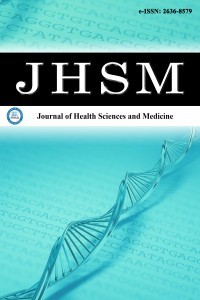1.
Wetterslev M, Hylander Møller M, Granholm A, et al. Atrial fibrillation (AFIB) in the ICU: Incidence, risk factors, and outcomes: the International AFIB-ICU cohort study. <em>Crit Care Med.</em> 2023;51(9):1124-1137.
2.
Glaser K, Marino L, Stubnya JD, Bilotta F. Machine learning in the prediction and detection of new-onset atrial fibrillation in ICU: a systematic review. <em>J Anesth.</em> 2024;38(3):301-308.
3.
Karataş MB, Durmuş G, Zengin A, et al. Association of uric acid albumin ratio with recurrence of atrial fibrillation after cryoballoon catheter ablation. <em>Medicina (Kaunas).</em> 2022;58(12): 1872.
4.
Wang X, Hou Y,Wang X, et al. Relationship between serum uric acid levels and different types of atrial fibrillation: an updated meta-analysis. <em>Nutr Metab Cardiovasc Dis.</em> 2021;31(10):2756-2765.
5.
Arques S. Human serum albumin in cardiovascular diseases. <em>Eur J Intern Med.</em> 2018;52:8-12.
6.
Wang Y, Du P, Xiao Q, et al. Relationship between serum albumin and risk of atrial fibrillation: a dose-response meta-analysis. <em>Front Nutr.</em> 2021;8:728353.
7.
Şaylık F, Çınar T, Akbulut T, Selçuk M. Serum uric acid to albumin ratio can predict contrast-induced nephropathy in ST-elevation myocardial ınfarction patients undergoing primary percutaneous coronary intervention. <em>Angiology.</em> 2023;74(1):70-78.
8.
Çakmak EÖ, Bayam E, Çelik M, et al. Uric acid-to-albumin ratio: a novel marker for the extent of coronary artery disease in patients with non-ST-elevated myocardial infarction. <em>Pulse (Basel).</em> 2021;8(3-4):99-107.
9.
Selçuk M, Çınar T, Şaylık F, et al. Predictive value of uric acid/albumin ratio for the prediction of new-onset atrial fibrillation in patients with ST-elevation myocardial infarction. <em>Rev Invest Clin.</em> 2022;74(3):156-164.
10.
Gao Z, Shi H, Xu W, et al. Hyperuricemia increases the risk of atrial fibrillation: a systematic review and meta-analysis. <em>Int J Endocrinol.</em> 2022;2022:8172639.
11.
Deng Y, Liu F, Yang X, Xia Y. The Key role of uric acid in oxidative stress, inflammation, fibrosis, apoptosis, and immunity in the pathogenesis of atrial fibrillation. <em>Front Cardiovasc Med.</em> 2021;8: 641136.
12.
Kuwabara M, Niwa K, Nishihara S, et al. Hyperuricemia is an independent competing risk factor for atrial fibrillation. <em>Int J Cardiol.</em> 2017;231:137-142.
13.
Zhao D, Jiao H, Zhong X, Wang W, Li L. The association between serum albumin levels and related metabolic factors and atrial fibrillation: a retrospective study. <em>Medicine (Baltimore).</em> 2022; 101(44):e31581.
14.
van Beek DEC, Kuijpers YAM, Königs MHH, van der Horst ICC, Scheeren TWL. Low serum albumin levels and new-onset atrial fibrillation in the ICU: a prospective cohort study. <em>J Crit Care.</em> 2020;56:26-30.
15.
Liao LZ, Zhang SZ, Li WD, et al. Serum albümin and atrial fibrillation insights from epidemiological and mendelian randomization studies. <em>Eur J Epidemiol.</em> 2020;35(2):113-122.
16.
Yeter H, Yıldırım T, Eyüpoğlu D, et al. Mild to moderate proteinuria is a heralding sign for acute kidney injury and mortality for intensive care unit patients. <em>Turk J Med Sci</em>. 2019; 49(2):543-550.
17.
Özgür Y, Akın S, Yılmaz NG, Gücün M, Keskin Ö. Uric acid albumin ratio as a predictive marker of short-term mortality in patients with acute kidney injury. <em>Clin Exp Emerg Med.</em> 2021; 8(2):82-88.
18.
Kalkan S, Cagan Efe S, Karagöz A, et al. A new predictor of mortality in ST-elevation myocardial infarction: the uric acid albumin ratio. <em>Angiology.</em> 2022;73(5):461-469.
</ol>
<p>

